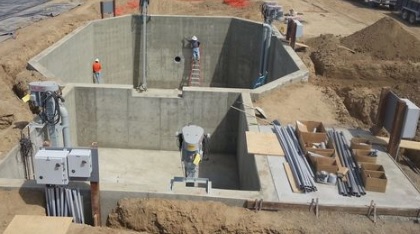A huge quantity of concrete is placed in large structures such as dams, canals. the tunnel, bridge, flyover, etc is called mass concrete.
For mass concrete, the slump value varies between 25 to 50 mm.

Large size aggregates are used for mass concrete. These aggregates provide low slump value and very stiff concrete. Large size aggregates also reduce the amount of cement in mixed concrete.
As the concrete is normally dry and harsh, it required immersion type of powder vibrators for full compaction. The concrete is generally placed in open forms. Because of the greater mass of the concrete, the heat of hydration may expand the temperature significantly.
The high temperature because of the warmth of hydration may bring about a broad and genuine shrinkage in the mass concrete. The shrinkage breaks can be forestalled by utilizing low warmth concrete and by quick relief of the concrete.
These can be evaded by putting the concrete in more limited lifts and taking holes a few days before the following lift. During cementing, cold water ought to be circled through the lines covered in the solid mass may likewise be valuable. In the event that conceivable, cementing should be possible in the colder time of year season to bring down the pinnacle temperature in concrete. Then again, the totals might be cooled before utilizing the blend.
The early age quality is extremely high in contrast with later quality Concrete relief at typical temperatures. During setting and solidifying, the volume change of mass Concrete is very little yet it can deliver a bigger creep at a later stage.
Characteristics of Mass Concrete
Mass concreting is generally designed and performed by emphasizing the thermal behavior, which if ignored affects the structural integrity and monolithic activity of the structure.
At temperatures more than 160 °F, unstable hydration products are produced, called delayed ettringite formation (DEF). DEF expands with the concrete as time passes, which results in significant cracking.
